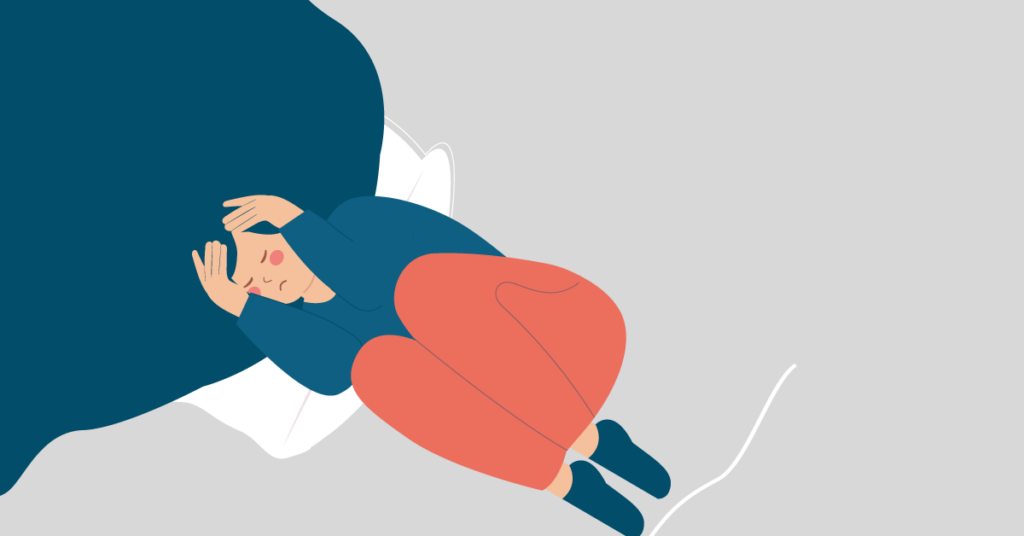What is Self-Harm?
Self‑harm, also known as nonsuicidal self-injury (NSSI), is the deliberate act of hurting yourself without the intent to die. It’s deeply connected to mental health and emotional distress.
People often use self-harm to cope with overwhelming emotions such as anger, anxiety, shame, numbness or despair, and it serves as a release valve when internal pain feels unmanageable. While the behavior may provide short‑term relief, it’s never a sustainable solution. Without treatment, patterns of self-harm can intensify, worsen shame and increase the risk of suicide.
Why People Turn to Self‑Harm
Self‑injury often begins as a way to manage pain:
- To externalize emotional distress into physical sensation
- To regain a sense of control during chaos or overwhelm
- As self‑punishment for shame, guilt or internalized criticism
- To interrupt dissociation or emotional numbness
These aren’t signs of attention-seeking behavior; they’re coping strategies built for survival in the absence of safer regulation tools.
Who Is Affected?
Self-harm affects a wide range of people across ages and backgrounds:
- Around 15% of adolescents and up to 35% of college students engage in self-harm at some point compared to approximately 4% of adults.
- It’s strongly associated with mental health diagnoses, including depression, borderline personality disorder, post-traumatic stress disorder (PTSD), anxiety, autism and eating disorders. In fact, as many as 70% of individuals with BPD engage in self-harm.
- Though considered non‑suicidal, self-injury appears in 40%-60% of suicide cases, making any self-harm behavior a significant risk indicator.
Recognizing the Signs
Self-harm is often hidden, but these signs may indicate it’s happening:
- Unexplained bruises or cuts, often in concealed areas (forearms, thighs, torso)
- Patterned scarring or clusters of minor wounds
- Wearing long sleeves or pants during hot weather
- Evidence of sharp objects with no practical use
- Increased isolation, emotional withdrawal or preoccupation with pain or self‑punishment
- Emotional indicators like constant exhaustion, shame or emotional volatility
The Mental Health Connection
Self-harm often overlaps with underlying mental health challenges:
- Depression or mood disorders can fuel self‑harm as a maladaptive coping strategy.
- Trauma or abuse histories are common in people who self-injure.
- Borderline personality traits, such as emotional dysregulation and relational instability, often co-occur.
- Autistic individuals may engage in NSSI for sensory regulation or emotional expression.
Self-harm may feel like relief at first, but it usually deepens emotional isolation over time.
Breaking the Cycle: Healing Is Possible
Self-harm is scalable and treatable. Recovery often involves learning healthier regulation skills and restoring emotional resilience.
Treatment Options That Work
- Trauma-informed therapy, such as dialectical behavior therapy (DBT) or cognitive behavioral therapy (CBT), which target emotion regulation
- Safety planning and emotional skill building to replace self-injury
- Therapy apps and tools — such as Calm Harm for managing urges and Sanvello or Moodfit for tracking thoughts and moods
- Peer support and group healing, offering connection and shared understanding
Healing may feel slow or uncertain, but it’s possible, and relief can grow as new habits are formed.
Immediate Support and Hotlines
If you are feeling overwhelmed or have urges to self-harm, you don’t have to face it alone — help is a call, text or chat away:
- Call or text 988 (U.S. Suicide & Crisis Lifeline) for free, 24-7 support.
- Use the Crisis Text Line by texting HOME to 741741 for trained volunteer support.
- Reach out to the Mental Health Hotline.
- Look into To Write Love On Her Arms (TWLOHA) and LifeSIGNS for community and education around self-harm and recovery.
These services aren’t judgmental. They’re here to help you feel heard and safe today.
FAQs
Self-harm is a method of coping — often used to manage intense emotions or to feel something when feeling numb. It’s not attention-seeking or suicidal intent; it’s a cry for relief.
No. Self-harm is typically nonsuicidal, but it increases risk and should be taken seriously. It can escalate or shift toward suicidal ideation over time.
Very common — 15% of teens, 35% of college students and 4% of adults may engage in self-harm at some point. Conditions like BPD see rates as high as 70%.
Speak calmly and without judgment. Encourage professional help, offer to connect them with resources and avoid shaming or minimizing. Let them know support is available.
Professional therapy is highly effective, especially DBT or CBT. However, support groups, crisis hotlines and therapeutic apps can help complement treatment and build hope.
You Are More Than This Moment
Self-harm doesn’t define who you are or predict your future. It may feel like relief at the moment, but it’s relief without healing. If you’re tempted to self-harm or feeling unsafe, call or text 988, text HOME to 741741 or reach out to the Mental Health Hotline anytime.
Editorial Team
-
 Written By: MHH
Written By: MHHMental Health Hotline provides free, confidential support for individuals navigating mental health challenges and treatment options. Our content is created by a team of advocates and writers dedicated to offering clear, compassionate, and stigma-free information to help you take the next step toward healing.
-
 Reviewed By: Dr. Daphne Fatter
Reviewed By: Dr. Daphne FatterDaphne Fatter, Ph.D., is a licensed psychologist, and international speaker dedicated to providing education on integrative trauma-informed therapies. She is the author of Integrating IFS (Internal Family Systems) into EMDR therapy. She is EMDR Certified and an EMDRIA Approved Consultant and has almost 20 years of experience providing EMDR. She is also IFS Certified and an Approved...
